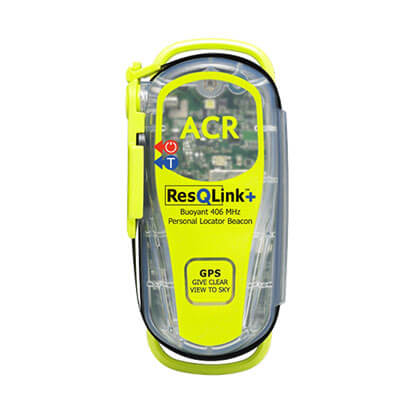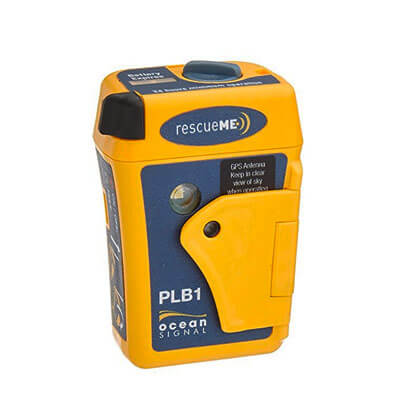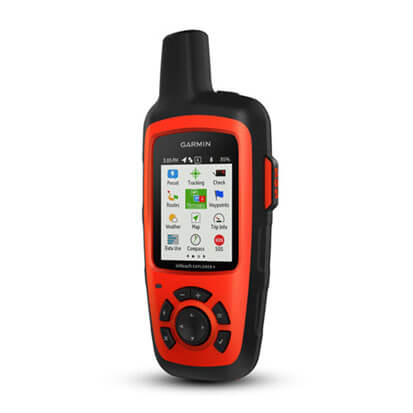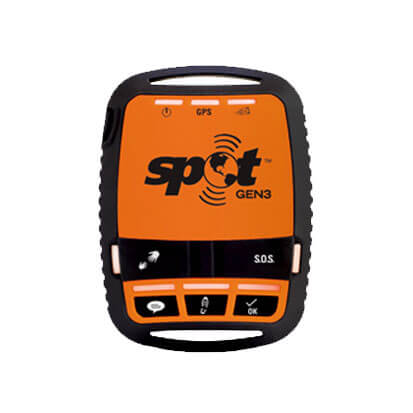Whether it be a Personal Locator Beacon (PLB) or a Satellite Messenger, an emergency transponder is something everyone spending a significant time in the wilderness should carry. No matter how experienced you are, something could happen outside of your control that leaves you in need of immediate medical help. It doesn’t need to be for yourself either, as it could be someone in your group or someone you come across on the trail who needs help.
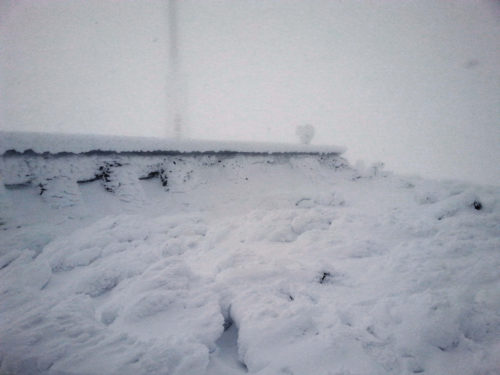
You never know when you could get hit with a below zero whiteout while hiking on an exposed ridgeline.
While your emergency transponder should only ever be used as a last resort, it is still no substitute for being prepared and having the knowledge for an emergency situation. A PLB does not guarantee a rescue, as things like harsh weather could impair the beacons signal or prevent a search and rescue team from being able to reach you.When it comes to discussing the different options out there, there are two types of devices to look at and three different networks that they run on.
Personal Locator Beacons and COSPAS/SARSAT
PLBs run on the COSPAS/SARSAT network, a non-profit network that is basically military run. It is the most comprehensive satellite network of the three and it spans the entire globe. The network began back in 1979 as a joint program between the US, Canada, France, and the USSR (replaced by Russia in 1992).The network runs on satellites as well as ground stations placed throughout the planet. An average of 5 people are rescued everyday through the use of COSPAS/SARSAT. These devices serve one purpose and one purpose only, and that is to call for help. They do not cost a subscription and the batteries typically last for years in standby.For more information on the network, you can access the official COSPAS/SARSAT website.
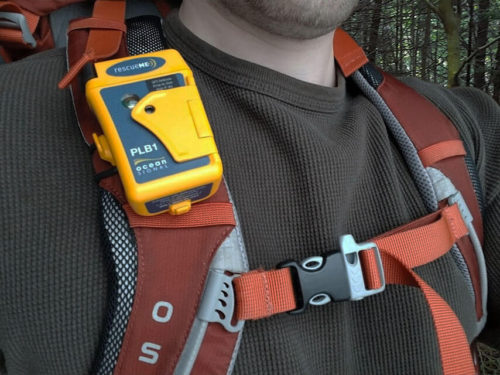
It is a good idea to keep your PLB or Satellite Messenger in an easy to reach location in case you are too impaired to dig through your pack.
Satellite Messengers and Private Networks
Satellite Messengers run on private, for-profit networks, either Globalstar or Iridium. While both claim to be global or near global, neither is as comprehensive as COSPAS/SARSAT. These networks also require a yearly subscription to use. If you don’t pay the subscription, no one is going to come when you press the button.Additionally, the frequency at which the satellite messengers emit their distress signals is not as powerful as those of the PLBs. You are more likely to make contact with a satellite on the COSPAS/SARSAT network then you are on Globalstar or Iridium. Also most Satellite Messengers run on disposable or rechargeable batteries, and you will regularly have to make sure your device is properly charged.There are still many reasons why you might choose a Satellite Messenger over (or in addition to) a PLB. Since they are on private networks and you are paying a subscription fee, they generally have a whole host of extra features. At a minimum, these additional features include being able to send preset messages and tracking your position for your friends and family at home to see. The higher end devices allow for two texting communication via satellite, so you can communicate with others even outside of cell range. Some models even include full on GPS capabilities, complete with topographic maps and waypoints.

If you can, make sure you have direct access with the sky when using a PLB or Satellite Messenger. Objects between you and the sky can obstruct the signal.
Pros and Cons Of a PLB
| Pros | Cons |
|---|---|
|
|
Pros and Cons of a Satellite Messenger
| Pros | Cons |
|---|---|
|
|
Suggested PLBs
ACR PLB-375 ResQLink+ 406 Buoyant Personal Locator Beacon
The ACR ResQLink is one of the most popular PLBs on the market. It is fairly lightweight, weighing in around 6 ounces. Not only is it waterproof but it also floats, making it great if you expect to be spending a lot of time over the water.
Ocean Signal rescueME PLB1
The Ocean Signal rescueME is the PLB that I currently carry with me. Like the ACR it is waterproof, however it is not buoyant unless used with an included floatation case. Being primarily a hiker, I did not feel the flotation was a necessary feature. The Ocean Signal is also a little bit lighter, weighing in around 4 ounces which helps keep my pack weight down.
Suggested Satellite Messengers
Garmin InReach Explorer+
This is the do-it-all Satellite Messenger. It is the most expensive up front, but provides the most amount of features. You can two way text, get the weather report, GPS tracking, smartphone pairing, and more. I will be bringing this along with my PLB when I hike the Pacific Crest Trail in 2018.
Spot Gen3
The Spot Gen3 is probably the most well known emergency system. It is the cheapest upfront, and provides a small selection of extra features. It allows up to three customizable messages that can be sent to preset contacts of your choosing. The Spot Gen3 also allows for GPS tracking that your contacts can view, with more expensive subscriptions allowing for more precise tracking.
